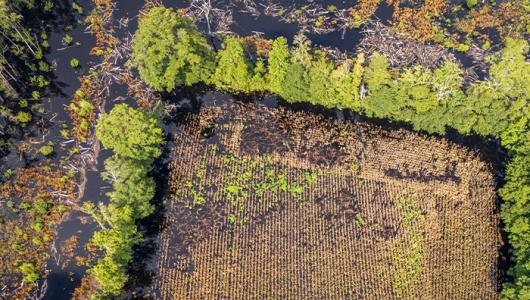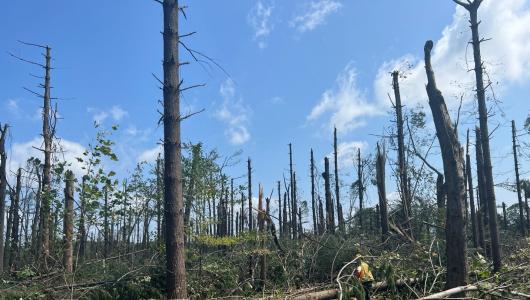Was your farm impacted by the recent “bomb cyclones” that hit the Midwest? If so, USDA offers a network of disaster assistance programs to help you recover losses, rehabilitate your farm, and manage risk in the future.
Right now, USDA’s Farm Service Agency is accepting applications for the Emergency Conservation Program in 6 Iowa counties, 47 Nebraska counties, and 4 Missouri counties. This program can help with removing debris; replacing and repairing fences; and grading, shaping and releveling of fields, and rehabilitating conservation structures.
Meanwhile, FSA is allowing emergency grazing on lands enrolled in the Conservation Reserve Program in both Iowa (through May 14, 2019) and Nebraska (through April 30, 2019).
Additionally, USDA’s Natural Resources Conservation Service can help with disposal of dead livestock, one of the practices available through the Environmental Quality Incentives Program to help producers respond to disasters. So far, NRCS has worked with producers to dispose of hundreds of carcasses in Iowa, Nebraska, and other states.
Other Programs
Other available programs include:
- Livestock Indemnity Program: Provides benefits to livestock producers impacted by livestock deaths in excess of normal mortality caused by adverse weather. Payments are equal to 75 percent of the average fair market value of the livestock.
- Emergency Assistance for Livestock, Honeybees, and Farm-Raised Fish Program: Provides financial assistance to producers of livestock, honeybees and farm-raised fish for losses due to adverse weather events or loss conditions as determined by the Secretary. Assistance is provided for losses not covered by other disaster assistance.
- Emergency Forest Restoration Program: Provides payments to owners of nonindustrial private forest land to carry out emergency measures to restore land damaged by a natural disaster. Participants may receive financial assistance of up to 75% of the cost to implement approved emergency forest restoration practices.
- Tree Assistance Program: Provides financial assistance to orchardists and nursery tree growers to replant or rehabilitate eligible trees, bushes and vines damaged by natural disasters.
- Emergency Loans: Provide support to producers who suffer farm related losses directly caused by the disaster in a county declared or designated as a primary disaster or quarantine area. Farmers located in contiguous counties may also qualify for Emergency Loans.
Manage Risk
Additionally, the Risk Management Agency administers federal crop insurance. Producers who purchased crop insurance will be paid for covered losses and should contact their crop insurance agent for issues regarding filing claims. Producers should report crop damage within 72 hours of damage discovery and follow up in writing within 15 days.
RMA also found ways to help agricultural producers impacted by the flood waters. RMA provided a Damaged Grain Buyers list on the St. Paul Regional Office website for Iowa, Minnesota, or Wisconsin.
FSA also offers coverage through the Noninsured Crop Disaster Assistance Program, which protects non-insurable crops that result in lower yields, crop losses or prevented planting. Eligible producers must have purchased coverage for 2019 crops.
Additional Resources
USDA’s Disaster Assistance Discovery Tool walks producers through five questions to help identify the best programs to meet their needs. For more information on disaster assistance programs, contact your local USDA service center.
Karen Bryant is a public affairs specialist serving USDA’s Farm Service Agency, Natural Resources Conservation Service, and Risk Management Agency. She can be reached at karen.bryant@usda.gov.


